10 Historical Figures Omitted from Night at the Museum
By Shane Rivers
Night at the Museum: Battle of the Smithsonian includes a whole host of well-known historical and pop culture figures. From Teddy Roosevelt to Darth Vader, the Ben Stiller comedy is just jam-packed with familiar faces. But what about those who didn’t make the cut? In this edition, we’ll take a look at 10 historical figures omitted from Night at the Museum and examine why they were left out.
1. Countess Elizabeth Bathory
Also know as: Blood Countess, The Bloody Lady of Csejte, The Tigress of Csejte, and Countess Dracula
While she was highly educated and reportedly a loving mother, this Hungarian noblewoman was also one of the craziest damn broads in the history of the world. 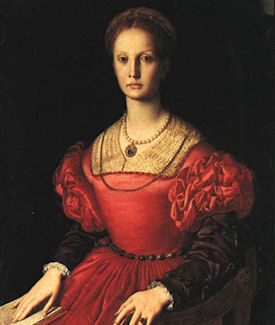 She would lure local peasant girls to her castle with the promise of well-paying jobs and then have them tortured and killed. This practice also extended to daughters of the lesser nobility who would travel to study the courtly graces under Bathory. She’s known to have whacked at least 80 girls, but the number may have been as high as 600. Since she was from an important noble family, Bathory managed to duck a public trial and a well-deserved execution. Instead, she was placed under house arrest in a walled up set of rooms within her castle. She died four years later, probably due to depression over being unable to flay the skin off the local tramps (who undoubtedly had it coming).
She would lure local peasant girls to her castle with the promise of well-paying jobs and then have them tortured and killed. This practice also extended to daughters of the lesser nobility who would travel to study the courtly graces under Bathory. She’s known to have whacked at least 80 girls, but the number may have been as high as 600. Since she was from an important noble family, Bathory managed to duck a public trial and a well-deserved execution. Instead, she was placed under house arrest in a walled up set of rooms within her castle. She died four years later, probably due to depression over being unable to flay the skin off the local tramps (who undoubtedly had it coming).
Including her in Night at the Museum: Battle of the Smithsonian would’ve been problematic, as Amelia Earhart–Ben Stiller’s love interest in the film–would’ve been targeted for beatings, genital mutilation and bizarre surgical procedures. Just a guess, but this sort of behavior might have interfered with the film’s family-friendly PG rating.
2. King Charles VI of France
Also known as: The Well-Loved, and The Mad
Believed to be a schizophrenic, that didn’t stop Charles VI from serving as King of France for 42 years. During this period, the wacky ruler accidentally killed some of his own men with a sword, forgot his own name, forgot he was king, thought his name was George, ran wild though the halls of his home, and even refused to bathe or change clothes for five straight months. Perhaps most bizarre was his occasional belief that he was made of glass. This led to his having metal bars installed in his clothing and other unusual precautions.
His first episode of “the crazies” took place in 1392 when someone tried to kill one of his close friends. Matters didn’t improve in 1393, when he was nearly burned to death during a tragic celebration which came to be known as “Ball of the Burning Men.” The King and five other men were dressed in elaborate costumes and covered in wax or pitch to hold on a layer of hemp (making them appear completely shaggy). When the King’s dumbass brother got too close with a torch, it started a fire which killed four of the six costumed men. Charles was only saved because a quick-thinking noblewoman threw her dress over his head to prevent the fire from spreading.
Too bad he was omitted from Night at the Museum: Battle of the Smithsonian. I think it would’ve been pretty cool to have a comical king running amok through the museum covered in lice and feces. Those cute monkeys could’ve even used his waste-covered body as a constant source of poop to fling.
3. Caligula
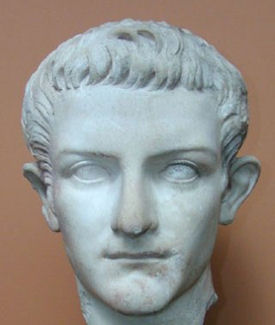 When people think of the words “insane” and “decadent,” the name of this third Roman Emperor often springs to mind. Heck, the movie based on his life (starring Malcolm McDowell) is still considered by many to be nothing more than a porno. Caligula seemed fine for the first two years of his reign, as he put on spectacles for the public, gave bonuses to the military and banished certain types of sexual deviants. But after recovering from a serious illness, something seemed to change. He started having people killed left and right, and things would only get more bizarre from there.
When people think of the words “insane” and “decadent,” the name of this third Roman Emperor often springs to mind. Heck, the movie based on his life (starring Malcolm McDowell) is still considered by many to be nothing more than a porno. Caligula seemed fine for the first two years of his reign, as he put on spectacles for the public, gave bonuses to the military and banished certain types of sexual deviants. But after recovering from a serious illness, something seemed to change. He started having people killed left and right, and things would only get more bizarre from there.
According to reports, Caligula wanted to have his favorite horse made a priest. He also insisted on being worshiped as a god, often dressing in public as Mercury, Venus or Apollo. He was also accused of sleeping with his three sisters and then prostituting them out to other men (making Caligula the first Emperor-Pimp). And the list goes on and on. Even if half of the stories aren’t true, Caligula was still willing to kill at the drop of a hat and sleep with anyone (man or woman) who came near him. He was no doubt fun at parties, that is, until he raped your spouse and had you beheaded. Not surprisingly, he was assassinated by being stabbed to death.
While he would’ve found an ally in the Night at the Museum: Battle of the Smithsonian character of Octavius (himself the first Roman Emperor), the hostilities between the tiny Roman armies and the miniature Old West folks would’ve taken on a decidedly more adult theme. It’s just a hunch, but I’m assuming that more than one child might become permanently scarred by the sight of Jedediah Smith (Owen Wilson) buried up to his neck and awaiting decapitation by large lawnmower-like blades.
4. Jesus Christ
Also known as: Jesus of Nazareth, Son of God, and The Prince of Peace
Before anyone starts bitching, let me state that I’m not comparing Jesus to the other lunatics on this list. No, the Son of God got excluded from the film because he’s just too darned good at everything. The movie’s title is Night at the Museum: Battle of the Smithsonian, but how can you have a conflict with The Prince of Peace hanging around? Besides making the cast uncomfortable with constant talk about dying for their sins, Jesus would’ve turned on the charm and forced the villainous Kah Mun Rah (Hank Azaria) to reconsider his evil ways. Even Darth Vader would’ve reformed once Jesus laid on the hands and fixed his sinister wheezing. WWJD? Ruin the movie – that’s what.
5. Ghengis Khan
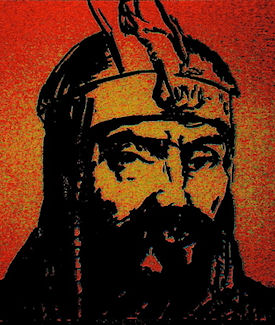 Forget the watered-down version of the fearsome Mongol leader seen in Bill and Ted’s Excellent Adventure. The real Ghengis would’ve never been captured by a couple of valley guys, no matter how many Twinkies they dangled in front of him. We’re talking about the man who started the Mongol Empire, the largest contiguous empire in the history of the world (over 13 million square miles). Suck on that, Alexander the Great. His armies are credited with killing over 35 million people during their conquests, and check out this hardcore quote from the man himself: “The greatest happiness is to vanquish your enemies, to chase them before you, to rob them of their wealth, to see those dear to them bathed in tears, to clasp to your bosom their wives and daughters.” Now that’s what I call being straight-up gangsta.
Forget the watered-down version of the fearsome Mongol leader seen in Bill and Ted’s Excellent Adventure. The real Ghengis would’ve never been captured by a couple of valley guys, no matter how many Twinkies they dangled in front of him. We’re talking about the man who started the Mongol Empire, the largest contiguous empire in the history of the world (over 13 million square miles). Suck on that, Alexander the Great. His armies are credited with killing over 35 million people during their conquests, and check out this hardcore quote from the man himself: “The greatest happiness is to vanquish your enemies, to chase them before you, to rob them of their wealth, to see those dear to them bathed in tears, to clasp to your bosom their wives and daughters.” Now that’s what I call being straight-up gangsta.
The Battle of the Smithsonian would’ve been over pretty damned quick if Ghengis and his armies had appeared in the film. Even a walking, talking statue of Abraham Lincoln couldn’t stand to the vicious Mongol hoards, and we all know what a badass Lincoln was.
6. Vlad Tepes
Also known as: Vlad the Impaler, and Dracula
When you inspire Bram Stoker to name his most famous character after you, you’ve gotta be one crazy mofo. That’s certainly the case with Vlad Tepes, a take-no-prisoners crown prince of Wallachia (now southern Romania). Actually, he was more of a take-prisoners-and-then-drive-a-wooden-spike-up-their-ass kind of guy. Still hailed as a hero in Romania, he fought battle after bloody battle to prevent the Ottoman Empire from conquering his homeland. When he took power, he assembled all the nobles and had them arrested. Older nobles and their families were impaled, while the younger nobles were marched to an ancient fortress and forced to rebuild it. Throughout his reign, Vlad is said to have impaled between 40,000 and 100,000 prisoners. When he was finally killed in battle, his head was sent to the Turkish Sultan and displayed on a stake. I guess they were big on irony back in those days.
7. Saparmurat Niyazov
Also known as: Saparmurat Turkmenbashi (meaning Leader of all Ethnic Turkmens)
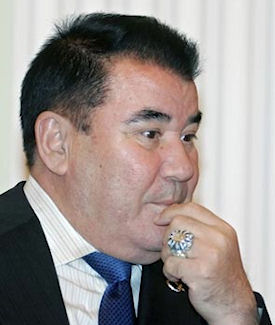 While most of the names on this list are long since dust, Saparmurat Niyazov didn’t kick the bucket until 2006. The President of Turkmenistan, he ruled from 1990 until his death (he was “elected” President for Life in 1999). An old-school commie egomaniac, Niyazov was filled with all sorts of brilliant ideas: limiting pet owners to only one dog or cat, banning lip syncing at public concerts, building an ice palace in the middle of the desert, putting his face on all bottles of vodka, shutting down libraries, and forbidding young men to wear beards. He also loved to name things after himself and his family. The names of several months were changed to reflect this bizarre obsession, and even a crashing meteor wasn’t spared. After he died, there were even reports that average citizens were pressured into mock displays of grief at the funeral.
While most of the names on this list are long since dust, Saparmurat Niyazov didn’t kick the bucket until 2006. The President of Turkmenistan, he ruled from 1990 until his death (he was “elected” President for Life in 1999). An old-school commie egomaniac, Niyazov was filled with all sorts of brilliant ideas: limiting pet owners to only one dog or cat, banning lip syncing at public concerts, building an ice palace in the middle of the desert, putting his face on all bottles of vodka, shutting down libraries, and forbidding young men to wear beards. He also loved to name things after himself and his family. The names of several months were changed to reflect this bizarre obsession, and even a crashing meteor wasn’t spared. After he died, there were even reports that average citizens were pressured into mock displays of grief at the funeral.
The reason for his exclusion from Night at the Museum: Battle of the Smithsonian is simple: with his penchant for renaming things, the film would’ve been called Night at the Turkmenbashi: Battle of the Turkmenbashi. Even the rascally charms of Ben Stiller couldn’t overcome a terrible name like that.
8. Gilles de Rais
Also known as: Bluebeard
One of the most important noblemen of his time, Gilles de Rais was a comrade of Joan of Arc and the Marshal of France. Unfortunately, he also had a thing for raping and killing children, and he’s estimated to have done in between 80 and 600 medieval moppets. The victims–usually, but not always, male–ranged in age from six to eighteen. Gilles was also known to engage in necrophilia with his victims before having their bodies burned and the ashes dumped into his moat. Since the Jonas Brothers provide the voice of Cerberus for Night at the Museum: Battle of the Smithsonian, it was decided to keep this creepy character far, far away.
9. Pol Pot
Also known as: Saloth Sar and Minh Hai
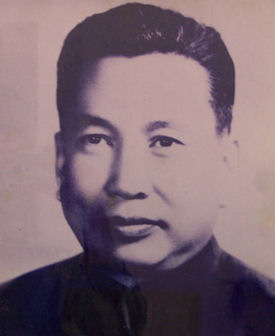 Pol Pot became the leader of Cambodia in 1975, and he wasted very little time in demonstrating just what a kooky little bastard he could be. People who lived in cities were forced out to toil in the countryside, and his Khmer Rouge government targeted the educated and disabled (among others) for interrogation or execution. Hundreds of thousands of people were marched into The Killing Fields of Cambodia, forced to dig their own graves, and then either beat to death or buried alive. According to one directive, “Bullets are not to be wasted.” Pol Pot’s insane policies eventually led to the deaths of twenty-six percent of Cambodia’s population (over one-million people), and the bastard would later have the gall to claim he did it for his country. Even after being forced out of power in 1979 (by the communist Vietnamese, no less), he continued to live on until 1998. So why was he omitted from Night at the Museum: Battle of the Smithsonian? Simple. He was an asshole.
Pol Pot became the leader of Cambodia in 1975, and he wasted very little time in demonstrating just what a kooky little bastard he could be. People who lived in cities were forced out to toil in the countryside, and his Khmer Rouge government targeted the educated and disabled (among others) for interrogation or execution. Hundreds of thousands of people were marched into The Killing Fields of Cambodia, forced to dig their own graves, and then either beat to death or buried alive. According to one directive, “Bullets are not to be wasted.” Pol Pot’s insane policies eventually led to the deaths of twenty-six percent of Cambodia’s population (over one-million people), and the bastard would later have the gall to claim he did it for his country. Even after being forced out of power in 1979 (by the communist Vietnamese, no less), he continued to live on until 1998. So why was he omitted from Night at the Museum: Battle of the Smithsonian? Simple. He was an asshole.
10. Delphine LaLaurie
A well-known New Orleans socialite, Delphine LaLaurie was known to have once beat a 12-year-old slave so badly that the girl fell from a balcony and died while trying to escape. Later reports indicate that slaves started a fire in the kitchen to draw attention. They then directed firefighters to the attic where scores of slaves were found in various states of disfigurement. These included: victims of forced sex change operations, slaves with their mouths sewn shut, a woman with her limbs removed and flesh peeled off to resemble a caterpillar, and buckets filled with severed genitalia. While these stories have been heavily disputed, it is known that she fled the city on the night of the fire. Some claim she continued to live on the outskirts of New Orleans, while another account tells of her death in France during a wild boar hunt. Since Night at the Museum: Battle of the Smithsonian includes characters listed as Tuskegee Airman 1 and Tuskegee Airman 2, it’s probably best that she was omitted from the film. The very idea of black men flying through the clouds would’ve probably been enough to give the crazy old cracker a heart attack.
